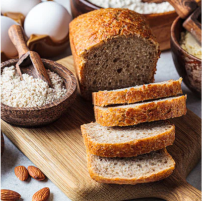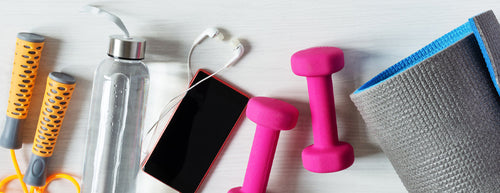Do I need to work on my functional strength? Yes, whether you work in an office, out on a building site or at home you need to work on keeping adequate levels of strength. Why? Functional strength is important as we need enough strength to perform our daily activates to the best of our ability. Every day activities such getting up out of a chair, lifting a shopping bag or playing sports all require functional strength. But there are a number of functional strength exercises that you can master that will help you build up your strength such as push-ups, squats and chin-ups. We've more on how to go about our top 3 below!
Top 3 Functional Strength Exercises to Master
Functional strength exercises can help to reduce the risk of injury and muscle atrophy from lack of exercise and old age. How do I work on my functional strength? There are many exercises that help to build functional strength. We've picked our three favourite functional strength exercises which can be done at home or at the gym - push-ups, squats and chin-ups.
Functional Strength Exercises: Push-Ups

The humble push-up is a simple yet effective strength builder. This exercise works many muscle groups and has the added advantage of having several variations to increase or reduce the difficulty.
The main muscle groups engaged during this exercise are the chest, triceps and shoulders. It also works secondary muscle groups including the abdominal, legs and back. The push-up is a great compound exercise as it requires several muscle groups to perform a full press-up.
Beginner Friendly
If you can’t perform a regular push-up or you can but your form is terrible and you are struggling to complete repetitions, then you should try this modifier. Get in the push-up position and then use your knees as your contact point instead of your feet. This will reduce the force required to complete the movement. Once you are competent completing this movement you can move onto the regular press-up.
Advanced Variation
A more advanced version of the push-up which I like is placing your feet on a step. This allows you to a get a deeper movement which increases the force required.
By changing the positioning of your hands you can target different muscles. Tip: If you keep your hands close together you will be working your triceps more and if you widen the gap you will be forcing your chest muscles to work harder.
Functional Strength Exercises: Squats

This compound exercise has become one of the most talked about and popular functional strength exercises in recent times. It’s a great exercise if you want to improve your leg strength and overall explosiveness. It targets the thighs, buttocks and hamstrings. It is a great functional exercise as we use the movements within this exercise many times a day for example getting up off a chair or lifting objects off the ground.
Beginner Friendly
If you have never completed a squat before or if you're not sure if you're using the correct form, you can incorporate this variation to help you with the movement and your form. Use a chair or bench that is the same height as the lowest point of the movement. This will ensure you are going deep enough without going too deep.
Advanced Variation
To increase the difficulty of this exercise, you can add weights such as weight plates, dumbbells or kettle bells. Use a weight which allows you to perform 12 - 15 repetitions as this will increase muscle strength and endurance.
Functional Strength Exercises: Chin-Ups/Pull-Ups

Chin-ups and pull-ups are a great indicator of your upper body strength. This compound exercise targets most of the muscles in your back. It also works secondary muscles such as the biceps and abdominals. The main muscle targeted in this exercises is the Latissimus Doris.
The only difference between chin-ups and pull-ups is that chin-ups are performed with your palms facing in towards you while pull-ups are performed with the palms facing outwards. Also, pull-ups target the back muscles more and require less effort from the biceps.
Beginner
If you are unable to perform a chin-up, you can build up your strength by using negative chin-ups. These are performed by hanging in the end position of the chin-up. Then slowly descend through the movement for five seconds.
Advanced
When you are completing more than 15 reps easily and you are looking to increase the intensity, you can incorporate some weight. I would recommend using a weight vest.
Please do not incorporate any weight until your form is perfect and you can perform the above exercise correctly.
Curious about resistance training? Read why you should include resistance training in your exercise routine!
Please note, this blog is for informational purposes only and should not replace medical advice.
It’s always best to consult your doctor before taking any new supplements, treatments or remedies if you are pregnant, breastfeeding or on medication.













